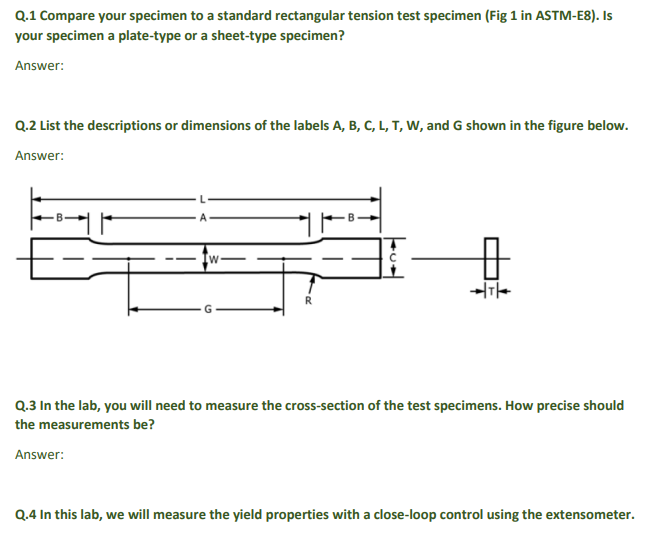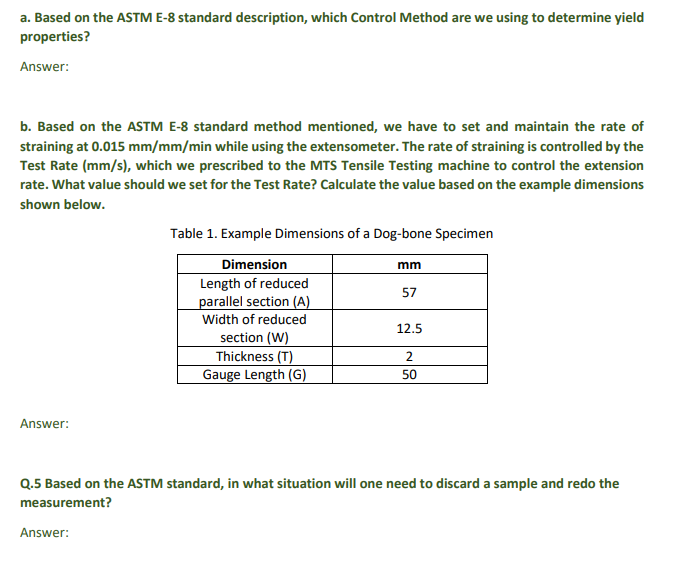Answered step by step
Verified Expert Solution
Question
1 Approved Answer
Q.1 Compare your specimen to a standard rectangular tension test specimen (Fig 1 in ASTM-E8). Is your specimen a plate-type or a sheet-type specimen?


Q.1 Compare your specimen to a standard rectangular tension test specimen (Fig 1 in ASTM-E8). Is your specimen a plate-type or a sheet-type specimen? Answer: Q.2 List the descriptions or dimensions of the labels A, B, C, L, T, W, and G shown in the figure below. Answer: A W Q.3 In the lab, you will need to measure the cross-section of the test specimens. How precise should the measurements be? Answer: Q.4 In this lab, we will measure the yield properties with a close-loop control using the extensometer. a. Based on the ASTM E-8 standard description, which Control Method are we using to determine yield properties? Answer: b. Based on the ASTM E-8 standard method mentioned, we have to set and maintain the rate of straining at 0.015 mm/mm/min while using the extensometer. The rate of straining is controlled by the Test Rate (mm/s), which we prescribed to the MTS Tensile Testing machine to control the extension rate. What value should we set for the Test Rate? Calculate the value based on the example dimensions shown below. Answer: Table 1. Example Dimensions of a Dog-bone Specimen Dimension mm Length of reduced 57 parallel section (A) Width of reduced 12.5 section (W) Thickness (T) Gauge Length (G) 2 50 Q.5 Based on the ASTM standard, in what situation will one need to discard a sample and redo the measurement? Answer:
Step by Step Solution
There are 3 Steps involved in it
Step: 1

Get Instant Access to Expert-Tailored Solutions
See step-by-step solutions with expert insights and AI powered tools for academic success
Step: 2

Step: 3

Ace Your Homework with AI
Get the answers you need in no time with our AI-driven, step-by-step assistance
Get Started


